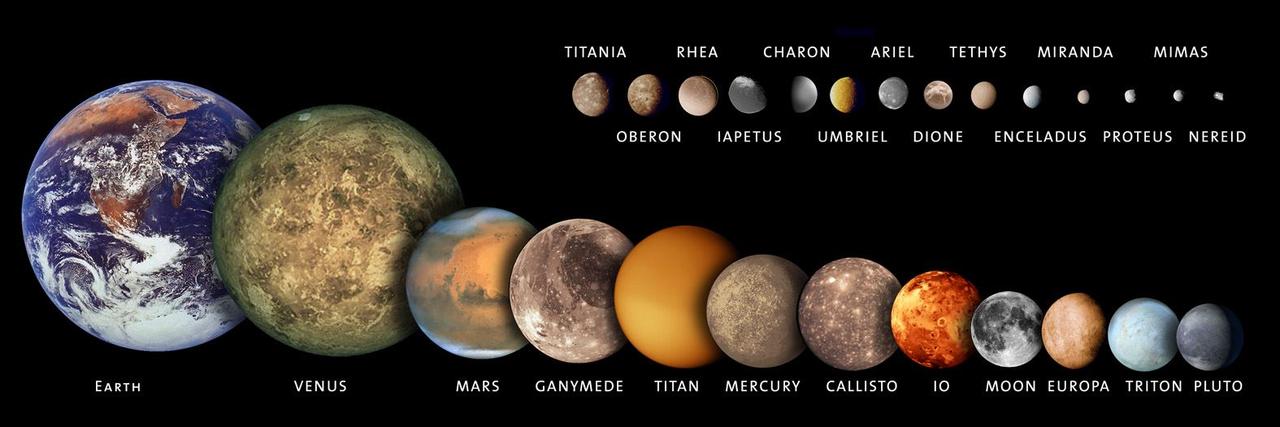Categorizing objects in the universe can be difficult. The fiasco with Pluto over the last decade is more than proof of that. We generally look to location and then to size as the two main methods for classifying the stuff that permeates the cosmos. Galaxies contain stars, which host orbiting planets, which host orbiting moons; While asteroids fly in between planets and icy comets are wander through the outskirts of star systems. But what about the in-between objects? Often we find strange things in strange places. There are moons in our solar system that are larger than planets. What would we call an object orbiting a moon? What about planets that are thought to orbit in the vast distances between stars? Things are not always cut and dry.

The same kind of ambiguity occurs when we look at the size of objects. There are so many different stars and planets and (probably) moons in the universe, we should see all sizes of object. But where are the boundaries? Where does space dust become an asteroid? Where does an asteroid become a moon? Where does a dwarf planet become a planet? And where is the line between a planet and a star?
We have a bit of an answer to that last one. Generally a star is characterized by the process of thermonuclear fusion, which produces a huge amount of energy and truly gives a star the fiery characteristics we associate with them. For objects that are just on the cusp, just a bit too small to fuse atoms, they are called brown dwarfs.

A brown dwarf sounds synonymous with a red dwarf star, which is a cool, small star. It’s much smaller than the Sun, yet it still is undergoing thermonuclear fusion. But a brown dwarf only radiates heat through convection, most of which is leftover from its initial formation. This lack of radiation makes them difficult to detect, and even harder to categorize.
For years, astronomers have pondered whether brown dwarfs behave more like stars or planets. They were found to release radio waves, which would suggest they are more like stars, which use their powerful magnetic fields to create an extremely hot atmosphere. But recently, a team of astronomers from Caltech, led by Assistant Professor Gregg Hallinan, have found that the powerful magnetic fields of Brown Dwarfs are creating mind-blowing aurorae, making them a lot more like planets.
In 2006, Hallinan found that the radio frequencies of brown dwarfs are pulsating. “We see a similar pulsing phenomenon from planets in our solar system,” says Hallinan, “and that radio emission is actually due to auroras.” This led him to ponder whether the radio emissions seen on brown dwarfs could be caused by auroras.
By observing pulses of radio waves from a candidate object, they determined that the object rotates every 2.84 hours. Observing the object optically they found that the brightness varied with the same period. Finally, by looking at Hydrogen Alpha emission, they were able to determine that the brown dwarf’s varying brightness was due to incredibly bright aurorae. “As the electrons spiral down toward the atmosphere, they produce radio emissions, and then when they hit the atmosphere, they excite hydrogen in a process that occurs at Earth and other planets, albeit tens of thousands of times more intense,” explains Hallinan. “We now know that this kind of auroral behaviour is extending all the way from planets up to brown dwarfs.”
With brown dwarfs being up to 80 times the mass of Jupiter, you can imagine that the aurorae they produce are of titanic proportions. Imagine orbiting such a massive world and being blinded by the beauty of massive glowing veils extending far out into space. The universe never ceases to amaze and surprise me with the variety of its systems. This research puts brown dwarfs into a category closer to planets, while giving a solid boundary between planets and stars.
At least until the next strange discovery.
